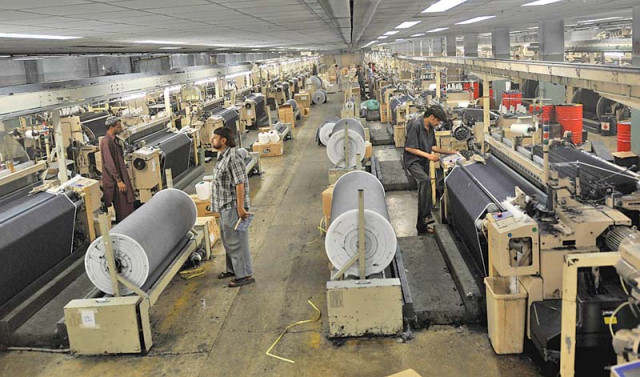The textile package will not achieve anything
It is an electioneering device, which is neither properly timed nor planned

It is an electioneering device, which is neither properly timed nor planned. PHOTO: FILE
In the current year, the government has already provided a reduction in power tariff and has tried to provide uninterrupted power supply to the textile industry. On top of that, five exports sectors have already been declared zero rated. Now, the government is trying to appease the powerful stakeholders in some way; since the election campaign is gaining momentum each day.
Timing of the package
The package was delayed by a couple of years. When international prices started to decline in 2013-14, the exporters direly needed this package. On the external front, exporters were getting lower prices for their products. On the internal front, they faced gas and electricity load-shedding and even higher power tariff. Caught by the electricity issue in the beginning, the government turned a blind eye.
In addition, small and medium sized exporters got hurt when all of a sudden rupee appreciated against dollar from 105 to 98. Many small exporters went out of business due to this volatility in the foreign exchange market. That was the time when exports started to decline and the industry clamoured for the relief package, but the government denied it.
By keeping rupee strong for so long, the government has aggravated the problems of exporter to some extent since our exports are of low value-added nature. Low value-added exports cannot command higher prices and are dependent on rupee depreciation to some extent. Under these circumstances, a planned package is required to upgrade the industry.
Time span for the package
The span of the package is quite short ie 18 months. The first 6 months of the package are unconditional that the export subsidies would be dished out without any commitment sought from the industry. The rest are a bit conditional on the expansion of the exports. In this short span, the industry cannot re-orient itself and gear for high exports. Furthermore, the chances of new entrants in the export business are minimal.
The package is a generic one without a differentiation strategy. There is always a need to differentiate between small and large exporters. In an ideal situation, small exporters are subsidies dependent, while large exporters can easily look after themselves.
In the actual world, small exporters cannot get the benefits of these packages owing to procedural issues and nature of their business, while large exporters get the maximum mileage out of such schemes due to their connection, positioning and clout. Like other packages, large exporters will remain the winners since they would be able to expand their exports quickly in this short span of time.
The government is not aware of the dynamics of Global Value Chains (GVCs) where global buyers have so many options to source from developing countries suppliers. These buyers can squeeze their suppliers easily since most of the suppliers in developing countries have low bargaining power. If buyers come to know that the government has announced a lavish package in Pakistan, they will start squeezing the margins of suppliers. This shows that the profitability of exporter would hardly increase.
In a nutshell, the package is an electioneering device. It is neither properly timed nor planned. There is barely any effort to increase the productivity of the textile sector. The structural issues have been ignored. On this basis, the result of this package would be similar to that of the GSP Plus.
The writer is an Assistant Professor of Economics at SDSB, Lahore University of Management Sciences (LUMS).
Published in The Express Tribune, January 23rd, 2017.
Like Business on Facebook, follow @TribuneBiz on Twitter to stay informed and join in the conversation.



















COMMENTS
Comments are moderated and generally will be posted if they are on-topic and not abusive.
For more information, please see our Comments FAQ